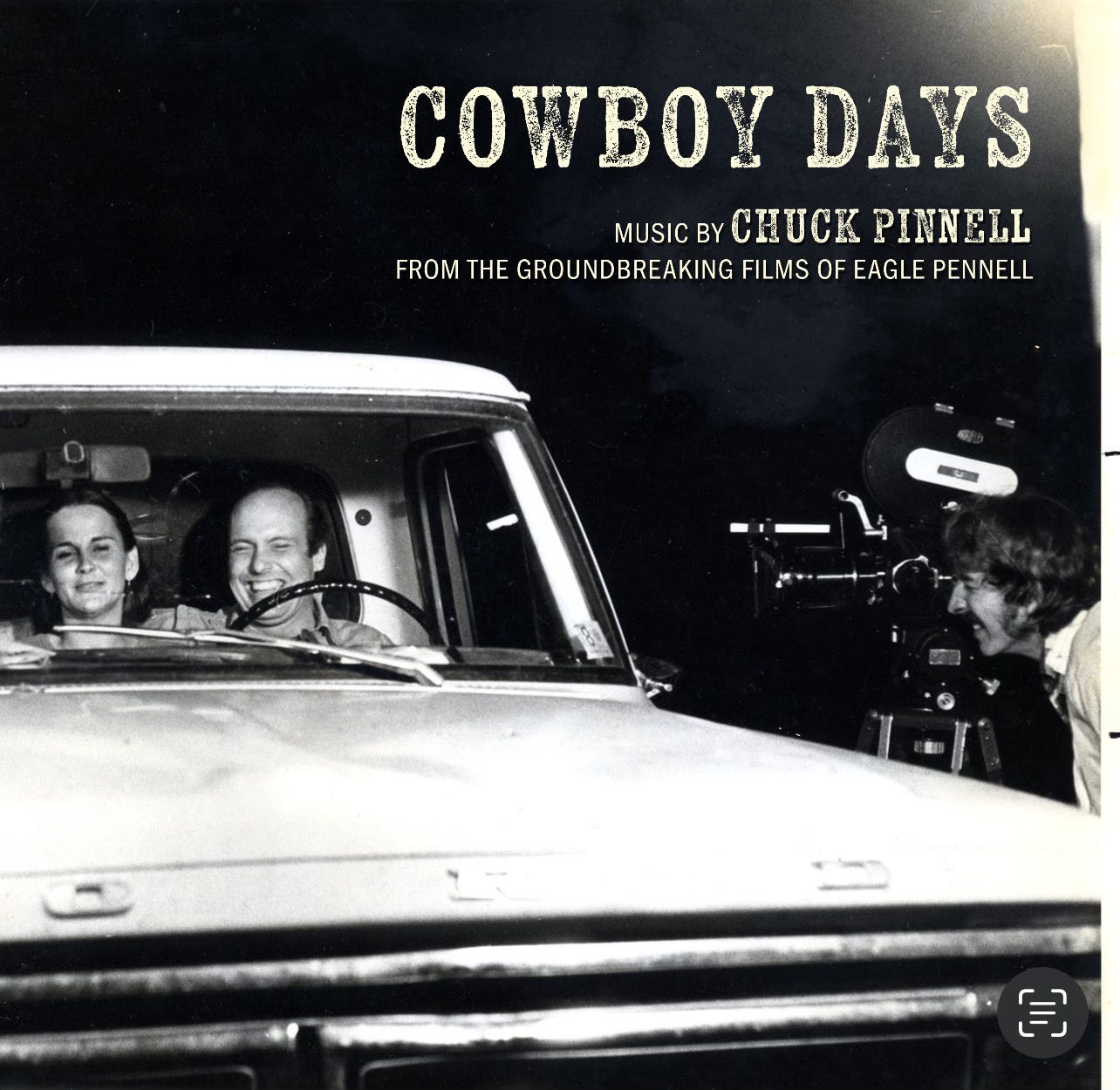Specimens from the Boneyard
Words and Music from Chuck Pinnell
Here is some thoroughly unusual soundtrack music from long ago and just now released—Cowboy Days. Talk about specimens from the boneyard! Cowboy Days presents a compilation of my guitar scores for The Whole Shoot’n Match (1978) and Last Night at the Alamo (1983)—the literal bedrock cornerstones of my career. These two highly influential classics were directed by my brother, the late great indie pioneer, Eagle Pennell. A handful of decades have slipped by since those halcyon days and its hard for me to connect with the young small town idealist who created this music, but it was me— I can tell because I’m still doing the same old shit! More refined I suppose, but the signature style is there in every track.
The opportunity to do the score for Shoot’n Match is what originally brought me to Austin, during Christmas of 1977. Except for three recent (and fascinating) years in Philadelphia, where I wrote The Irish Singer, I’ve been here ever since. The recording sessions for Shoot’n Match were done at a small studio on the eighth floor of the Littlefield building in downtown Austin. It was engineered and produced by legendary sound designer, Wayne Bell. Ample reason by itself to give this a listen. He captured the entire score in a live, “heads up” mix, on a Nagra (standard sound recording device from the 60’s to the 90’s), normaly used to record film dialogue but here pressed into musical service. We relocated to Wayne’s home in west Austin to record Last Night at the Alamo—and had benefit of a 4 track, stereo tracking, drums and percussion, electric guitar and an early synthesizer. Wayne did a phenomenal job engineering and steering, and that young idealist played his ass off, played his heart out, and created on the spot like his life depended on it. It kind of did.
I had no clear idea of what I was building at the time, but the lessons learned on these two worthy projects; in music, film, and life—became the template for all meaningful work to come. Of course, one of the lessons was how rare good work like that is. I did a lot of waiting. Eventually I got around to running my own projects…
Returning to 1978 and 1983 from this far flung moment was a bit of a mystical exercise and a deep rabbit hole. Kind of sorrowful really, but also grandly rewarding. I was given the isolated music tracks; including source music, dialogue and sound effect tracks. And then I settled in for the long haul. Gradually coming to grips with my early sophomoric shortcomings, wondering if it really was worth the trouble, eventually restoring and surpassing the sound we were able to achieve then, editing and sequencing it all into a cohesive story—and adding a few touches from the keyboard of my brilliant colleague Peter Stopschinski—ultimately, the work got done.
The Whole Shoot’n Match really cued things up for my brother back at the close of the 70’s, and for me as well. Robert Redford saw it at the USA film festival in 1978 and famously commented that it’s originality and maverick energy had inspired him to begin the Sundance Institute. Last Night at the Alamo propelled him even further. His trajectory went off into the 80’s like a rocket—as he was sometimes fond of saying—lots of things took off like a rocket for him. Sadly he crashed back to Earth, but that’s another story…
For me, Eagle’s success with Last Night at the Alamo coincided with my discovery of a story that 40 years later—would become a novel. Eagle and I, longtime childhood enemies, had learned to work well together and his burgeoning fame seemed to have arrived, most advantageously, at just the right time. I fancied I could become a screenwriter, as well as a composer and guitarist, and write him a film that would make us all rich and famous! Well, Eagle was certainly down with that, and I was right about some of it—I could be a writer and a composer, but it would take a lifetime to prove it.
It’s pretty much impossible to describe, exactly, what Eagle and his two bulwark films mean to me—but Cowboy Days just might do that job for me.


